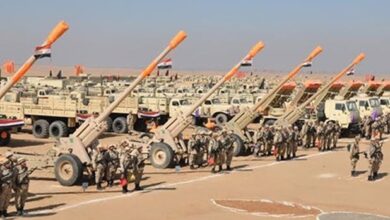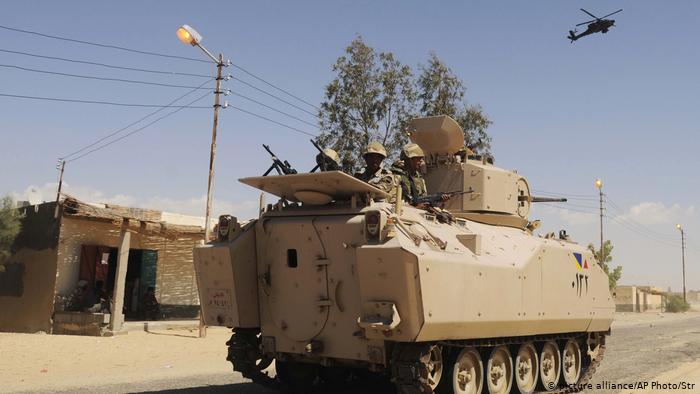Amid Egypt's troubled transition, news from Sinai is emerging again, albeit in its old familiar form. Lawlessness is the story of the arid peninsula, which is home to an intricate set of historic, political, social and economic conditions that have transformed it into a frontier where the state has ceased to exist.
A series of kidnappings of foreign tourists have become currency for Bedouin to express their dissent over the detention of their fellow tribesmen. These tribesmen are either in detention following the mass arrests that occurred after the terrorist attacks between 2004 and 2006 or are facing weapons and drug charges. More recently, some Bedouin were emboldened to besiege a military base of international peacekeepers to protest the detention of their relatives. In the background, the constant attacks (as many as 13 in 2011 and early 2012 combined) on the pipelines channeling gas to Israel act like a chorus to a song of lawlessness in the peninsula. And of course, the theatrics of a group of masked armed men raising black flags inscribed with "No God but Allah" in the North Sinai city of Arish, who battled with the police for hours last July, helped further raise fears of a rise in militancy in the peninsula.
For some time, Sinai has been perceived and dealt with as a state of exception in the Agamben sense, where mundane state performance is suspended. Pockets of dissent emerging in Sinai are only understood in the context of a security failure and, subsequently, the recent wave of lawlessness is incarcerated in this same security logic.
This security logic is portrayed in the international fears of a potential ascent of Islamic militancy in the desert of Sinai, an image reminiscent of South Yemen, or — not far away — the bordering Gaza Strip. Whether due to a spike in recent infiltrations from across the border or the current thriving of militant cells that previously had no visibility with the former regime's repression of Islamists, there are indeed indications of increased militant activity in Sinai. But how do we grapple with this alarming rise that at times has been blown out of proportion by the media? A pure security logic singles out the phenomenon, pushing to the sidelines the conditions that made Sinai a fertile territory for increasing militancy.
When this security logic is abandoned for a deeper approach to solving Sinai's problems, attempts are often fixated on economic solutions. Talk is mainly about the need to establish an economic development plan for the marginalized region, one that focuses on re-populating it and creating opportunities. A draft law has already been issued by the ruling Supreme Council of the Armed Forces that would codify the state's obligation to develop Sinai. But the fact that SCAF feels pressed to push through a rather hasty development law for Sinai in the transition period at a time when the elected Parliament hasn't passed any other legislation takes us back to the security paradigm, i.e., that Sinai needs to be developed for security reasons.
Many in Sinai articulate their issues along economic lines. In South Sinai, Bedouin communities often complain about how the tourism industry is designed to exclude them so they have to live on its margins (literally letting their animals herd on the waste that comes out of tourist resorts). In North Sinai, Bedouin communities speak of the blockade regime that has been sponsored by Israel and imposed by Egypt to stop any lifeline of support to the Hamas-led government in Gaza. For these communities, the economic opportunity of trade with Gaza has been jeopardized. In response, an underground insurgency manifested in the lucrative tunnel traffic between Sinai and Gaza thrives. Around this illegal activity, tribesmen have instituted an entire economic structure based on different forms of smuggling. Meanwhile, many cite a lack of interest in investing in an area that is ripe with potential and has the possibility of reducing its own unemployment. Official reports say that only about 13 percent of the some 400,000 inhabitants of Sinai are officially employed. This state of economic marginalization has become internalized in Sinai, increasingly reflected in political lines.
Today, many in Sinai articulate a political malaise associated with marginalization. For example, the reported exclusion of many young Bedouin from army conscription has become an index of mistrust in the community and is seen as an attempt to oust them from the Egyptian social fabric. Those who have been detained for various reasons resent the "outlaw" nomenclature bestowed upon them by the outgoing regime of Hosni Mubarak and its interim inheritors, the generals of SCAF, who categorized the region as the bastion of criminals.
These are only facets of what is stirring the Sinai cauldron of wrath. The issues are both political and economic and need to be understood as such. In a way, understanding the plea of the people of Sinai is a reflection of the entire revolutionary movement that caught Egypt off guard last year in a political upheaval that encompassed a host of economic, social and cultural pleas. Only when its political aspect is understood and unpacked by the state can there be a more perceptive engagement with the Sinai region and a more reasonable assessment of risk.
Lina Attalah is the managing editor of Egypt Independent.
This article was originally published on © bitterlemons-international.org




